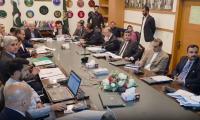The killing of the Afghan Taliban chief Mullah Akhtar Mansour in a US drone strike is a major setback for the insurgent movement. His death comes barely a year after the disclosure of the death of the Taliban’s founding leader Mullah Omar.
Mansour was reportedly targeted by US drones in Ahmedwal town, 20 kilometres from Balochistan’s Noshki district. The US considered the new Taliban chief a major hurdle to peace and reconciliation in Afghanistan. However, it is yet to be seen if his killing will have a significant impact on the Taliban’s ongoing spring offensive in Afghanistan, and whether it will improve the prospects of peace talks or undermine them further.
In July 2015 when Mansour assumed the leadership of the Afghan Taliban, finding a political solution to the Afghan conflict looked achievable. Given his pragmatic approach, politically accommodating nature and closeness with Pakistan’s powerful military establishment, the stakeholders of the Afghan conflict looked towards his appointment favourably, in hopes of reaching a political compromise. However, the developments that transpired following his appointment were concerning.
It is noteworthy that in the last meeting of the Quadrilateral Coordination Group, the Afghan government demanded that all obstacles to a peaceful settlement of the Afghan conflict should be removed by force. Previously, under a secret agreement, Pakistan’s establishment cooperated and coordinated with the CIA in its drone campaign against leaders and operatives of Al-Qaeda, the Haqqani Network and the Afghan Taliban.
Mansour’s killing can possibly be the result of a renewed understanding to put the faltering Afghan peace process back on track, slow-down the ongoing spring offensive, and work with the reconcilable Taliban groups by isolating the hardliners.
Another striking fact about this drone attack is that of the 296 done strikes that the US has conducted in Pakistan, this is the second one outside the Federally Administered Tribal Areas (Fata). Previously, most of the strikes were strictly confined to Fata’s North and South Waziristan tribal regions. The other drone attack outside Fata was on November 21, 2013 targeting a seminary of the Haqqani Network in Khyber Pakhtunkhwa’s Hangu district. If true, this could potentially signal the start of a new phase of the US drone campaign against the Taliban hiding in Balochistan. This could force Taliban leaders to relocate back to Afghanistan or take shelter elsewhere in Pakistan.
The immediate fallout of Mansour’s death will be the crash of the QCG-led peace process. All stakeholders will adopt a wait-and-see approach and reassess the situation that arises following his death. The Taliban will not return to the talks, if at all, until they have chosen a new leader. Meanwhile, the QCG members will closely observe the appointment of the Taliban’s possible new leader, and see what policies he adopts towards the peace talks.
Mansour’s death will also spark intense power struggles within the Taliban’s top leadership. Despite the solid hierarchical structure of the movement, the appointment of a new leader is not a simple matter. Judging from the Taliban’s current leadership hierarchy, one of Mansour’s two deputies – Sirajuddin Haqqani (chief of the Haqqani Network) or Maulvi Haibatullah Akhundzada, former judicial chief and a religious scholar – may succeed him. Mullah Omar’s son Mullah Yaqoob and Mullah Qayum Zakir, the most senior Taliban commander after Mansour, may also be leading contenders.
Mansour himself was not a consensus candidate to succeed Mullah Omar. His appointment, which bypassed the mandatory meeting of the Taliban’s religious council or Rahbari Shura, was deeply controversial and contested. Some Taliban religious scholars termed his appointment ‘religiously illegal’. At the time, Mullah Qayum Zakir, Mullah Yaqoob and his brother Mullah Manna, Mullah Muhammad Rasool Akhund and some members of the Taliban’s Qatar office – including Mullah Omar’s close aide Tayyab Agha – publicly opposed Mansour’s appointment. Only recently has Mansour managed to overcome internal differences by winning over the conditional loyalty of some groups.
His death will also provide a new opportunity to IS-Khorasan, the Afghan affiliate of the Islamic State, to further entrench its presence in eastern Afghanistan. It will enable IS’ local leadership to win the loyalties of disgruntled Taliban elements who may be attracted towards it if their demands and grievances are not addressed in the leadership struggle. The hardliners within the Taliban movement, who might face US drone strikes or military operations, may gravitate towards IS-Khorasan if pro-talks elements prevail in the new power struggle.
Mansour’s sudden death can thus result in three possible scenarios for regional peace and security.
First, if Pakistan’s complicity in Mansour’s killing is proven, it can result in unification of the Afghan Taliban with their Pakistani counterparts and Al-Qaeda. The Taliban can launch reprisal attacks to avenge Mansour’s death on both sides of the Pak-Afghan border. If this were to happen, it would herald a new phase of militancy in the region which would blur the lines between transnational, regional and local militant groups operating in the Af-Pak region.
Second, there is a possibility of a positive outcome – as a result of the empowerment of a Taliban leader who is favourably disposed towards a political settlement. However, the chances of this are slim because the new leader will face immense pressure from within the Afghan Taliban to continue the fight. New leaders of militant groups can only win loyalty when they assert themselves forcefully through battlefield victories.
Third, further factionalisation and division of the Taliban movement may weaken their military prowess and political cohesion. If this happens, then Kabul and Washington will be inclined towards a divide-and-rule approach by politically accommodating the reconcilable elements while taking action against the hardliners.
Following the death of Mullah Omar, divisions within the Taliban ranks neither altered the overall shape and nature of the Afghan conflict, nor did they significantly impact the Taliban’s battlefield gains and spring offensive. The fight continued as the Taliban Shura sorted out differences and leadership disputes. The implications of Mansour’s death are likely to be more or less the same.
The writer is an associate research fellow at the International Centre for Political Violence and TerrorismResearch of the S Rajaratnam School of International Studies, Singapore. Email: isabasit@ntu.edu.sg
Internationally, there have been misleading theories propounded about so-called slowing of Chinese economy
Karachi has long been Pakistan’s financial capital and a major hub for industry and trade
In the past, with every rising of the sun, much anticipation was associated with reading the newspaper
It is clear that more is at stake as US abandons its role as global leader of system based on multilateralism
I believe that those who adopt attitude of forgiveness, mercy and tolerance are role models for all of humanity
First major point of contention between Brussels and Washington is the unequal distribution of defence expenditure







